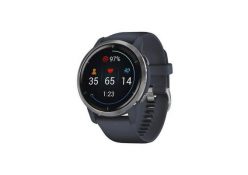From simple early designs to today’s speedy sporting tech, these two-wheeled vehicles have stepped up a gear.
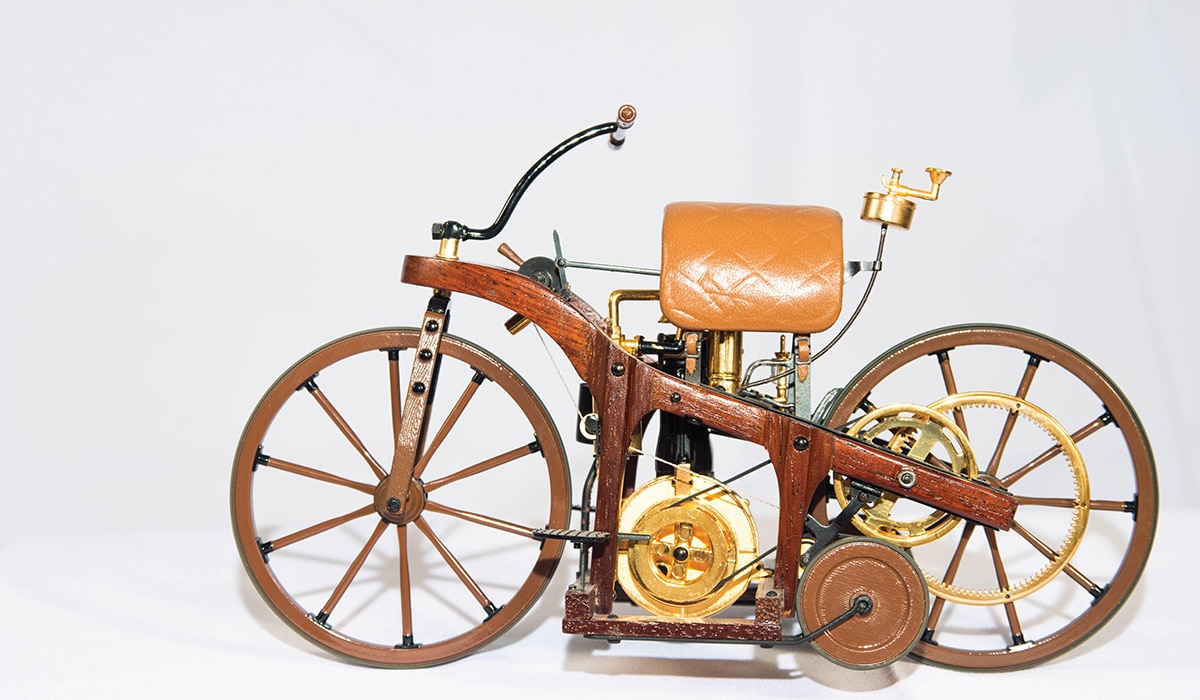
1885: (Sort of) the first motorbike
Described as the first true motorbike, the 1885 Daimler Reitwagen was the earliest motorcycle to be powered by a petrol engine successfully. The Reitwagen, German for “riding wagon”, was engineered by inventors Gottlieb Daimler and Wilhelm Maybach. Daimler is considered to be the “father of the motorcycle” despite three similar models being invented prior to the Reitwagen. This is because they were steam powered and didn’t fi t the definition of a modern motorcycle: a two-wheeled vehicle with an internal combustion engine. The Reitwagen had a single four-stroke 264 cc (cubic centimetre) engine. Its maximum speed of 11 kilometres per hour is nothing compared to today’s superbikes that hit speeds of more than 300 kilometres per hour. Despite being classed as a motorbike, the two-wheeled Reitwagen required additional small wheels as stabilisers to keep it upright when it turned corners. Nevertheless, the low speeds and mobility issues were overlooked for this motorbike’s innovations and the Reitwagen served as a template for future motorbikes, sparking the evolution of more mobile and efficient models.
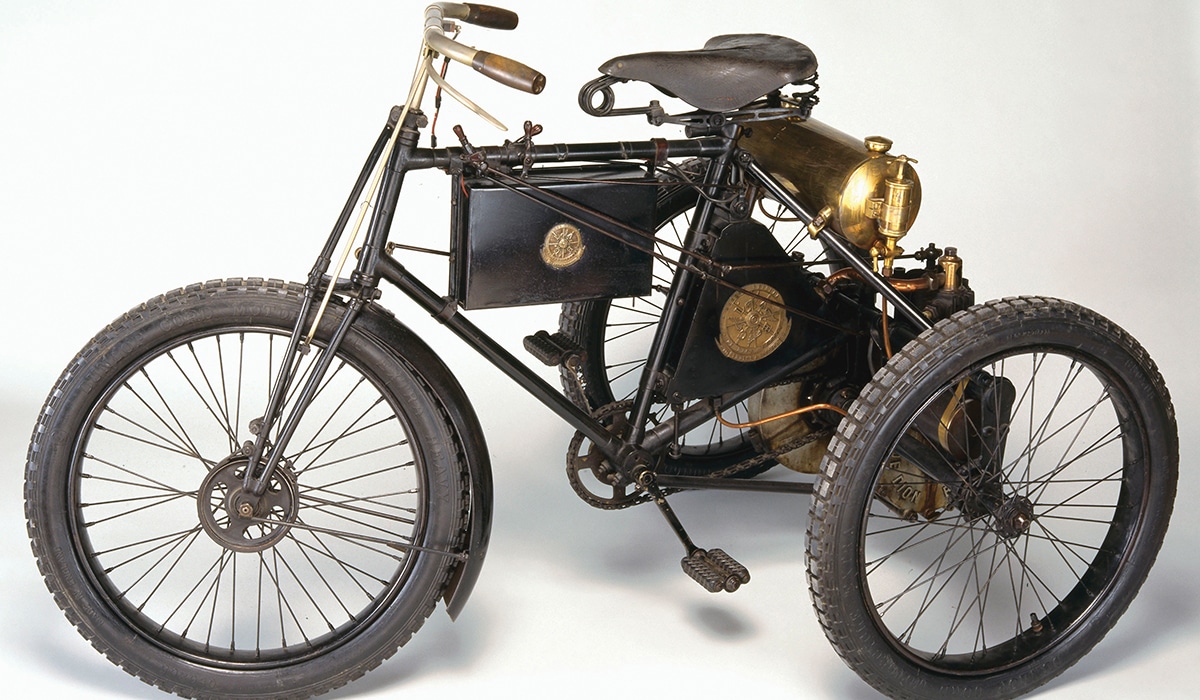
1897: The De Dion-Bouton motor tricycle
Between 1897 and 1901, 15 000 De Dion-Bouton motorbikes were sold. This was the first major surge in motor vehicle sales. The three-wheeled bike was inspired by the Reitwagen and caused manufacturer De Dion-Bouton to focus on gasoline engines. The bike’s frame was designed for a pedal bike with an engine, ignition, battery, and three-litre fuel tank. With a full tank, the bike could travel around 69 kilometres before it needed to be refuelled. By the end of the decade the motor tricycle was popular as the fastest available form of motor transport. It could travel over double the speed of the first motorbike, at 34 kilometres per hour.
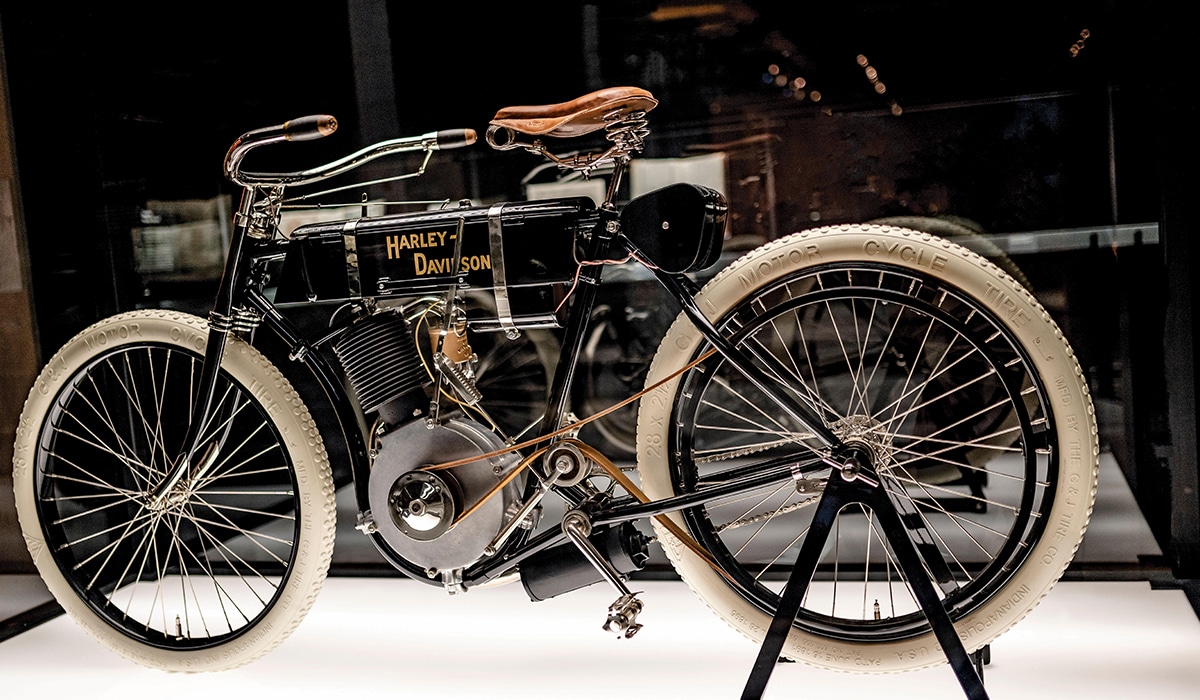
1905: The rise of Harley-Davidson
Harley-Davidson is still an iconic marque in the world of motorcycles. The motorbike manufacturer has been around for over a century and is one of the largest in the world. The Harley-Davidson Model 1, which was built in 1903 and launched in 1905, was the first motorbike produced by the company. It wasn’t as smooth as the Harley-Davidsons you may be familiar with today. To get it up and running the By 1920 Harley-Davidson rider had to pedal until the air in the single-cylinder engine was compressed enough for fuel ignition. When sufficient pedalling had taken place to fi re up the engine it would deliver power to the motorbike. By 1909 this engine was replaced by a two-cylinder engine that could carry the rider up to 96 kilometres per hour. These machines were much more successful and 3200 were produced by 1910.
Motorbike Types
Standard
These have a simple structure and are usually multipurpose, with 125 cc to 1000 cc engines.
Touring
These bikes are good for cross- country travelling and are one of the largest types of bike.
Off road
Off-road motorbikes have higher suspension than other bikes and the tyres have extra grip.
Cruiser
Cruisers have a lower seat and are designed for people who like to ride around town in style.
Sports
Racing motorbikes are engineered so the rider leans forward to be streamlined.
Dual purpose
These bikes aim to tackle both on-road and off- road conditions.
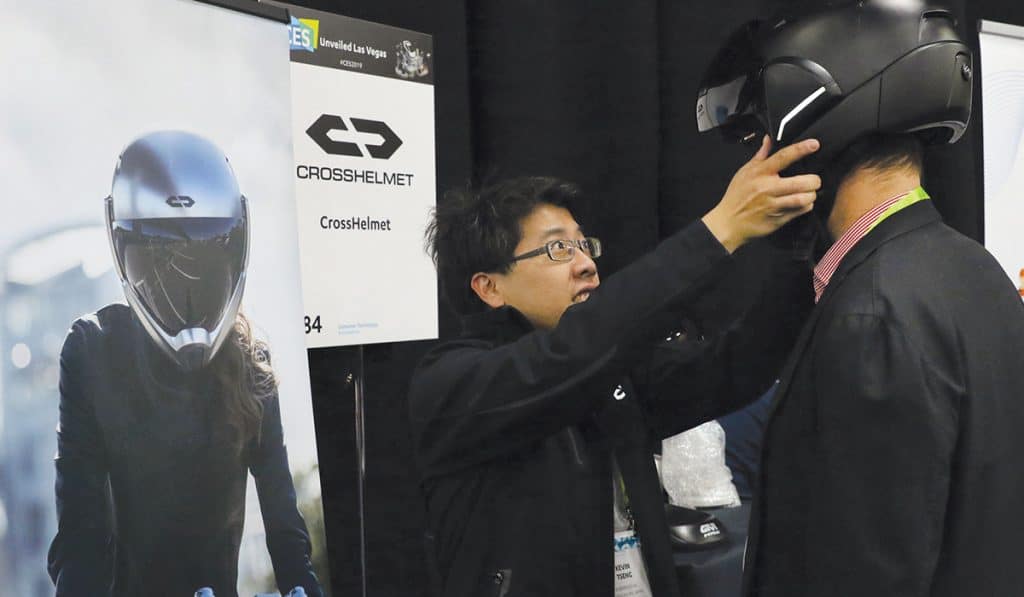
What are smart helmets?
Helmets are one of the most vital pieces of equipment a motorcyclist can own. By wearing one, the risk of suffering a significant head injury is reduced by around 70 per cent. Smart motorbike helmets help keep bikers safe, focused, and connected when commuting or racing. With speakers and microphones, these tech-filled head protectors allow riders and passengers to communicate without taking their eyes off the road. Modern helmets also incorporate augmented reality that is activated by voice commands. The augmented- reality information is displayed on the visor and can show directions and traffic updates, and alert the wearer to hazardous weather. A rear-facing camera built into the helmet also provides motorcyclists with 360-degree views when necessary, all while enabling them to keep their focus safely on the road ahead.
5 Major motorbike moments
1. Horizontal Engines
In 1921 the Moto Guzzi Normale bike was released. This was the first Moto Guzzi model and demonstrated early use of horizontal engines in bike design. Laying the engine on its side lowered the centre of gravity and minimised the vibration felt when riding.
2. First Superbike
The Brough Superior SS100 was the world’s first superbike, or high-performance motorbike. It was built with a guarantee to drive faster than 160 kilometres per hour, extremely rare for any motor vehicle at the time.
3. Sport Bike
Honda’s FireBlade CBR900RR sport bike was built with weight saving as the priority. Revealed in 1992, the bike was powered by a 900 cc engine and was the lightest and most compact in its class.
4. Grand Prix
The Honda NSR500 is the most dominant Grand Prix motorbike in modern racing. Between 1984 and 2002 ten 500 cc World Championships were won by this model, with over 100 wins in total.
5. Lightweight
This futuristic-looking lightweight motorbike is the Kawasaki Ninja 400. The sport bike is the largest in the 399 cc category but is also one of the lightest motorcycles on the market at just 168 kg.
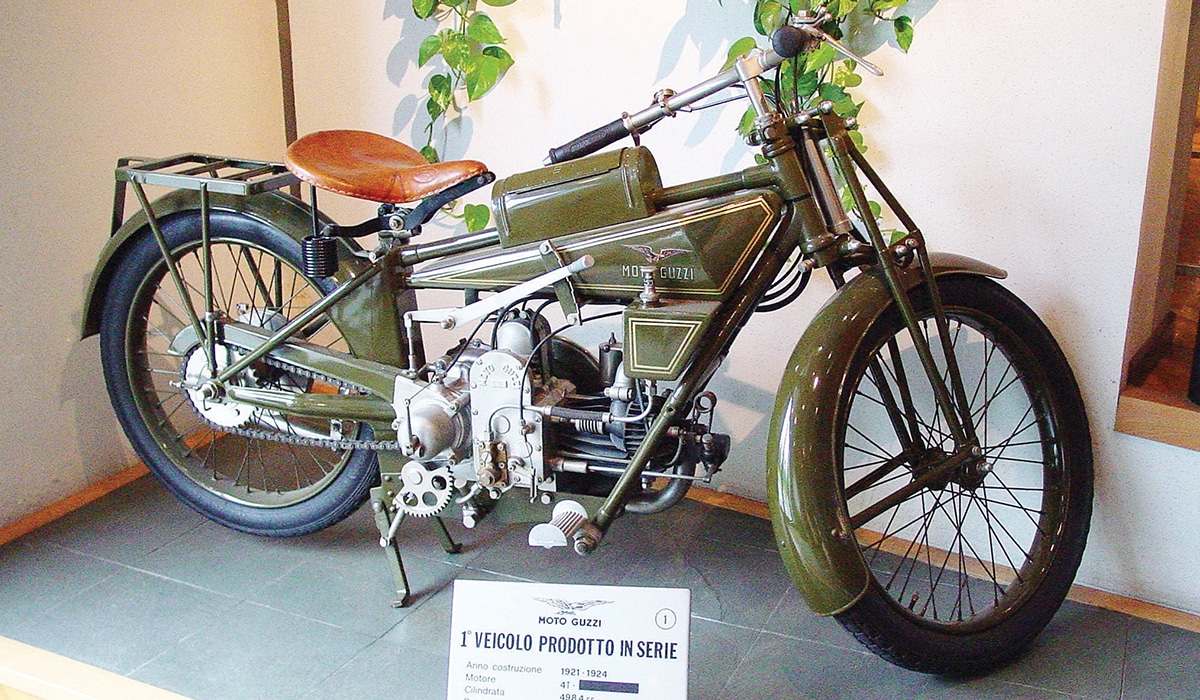
1. Horizontal Engines
In 1921 the Moto Guzzi Normale bike was released. This was the first Moto Guzzi model and demonstrated early use of horizontal engines in bike design. Laying the engine on its side lowered the centre of gravity and minimised the vibration felt when riding.
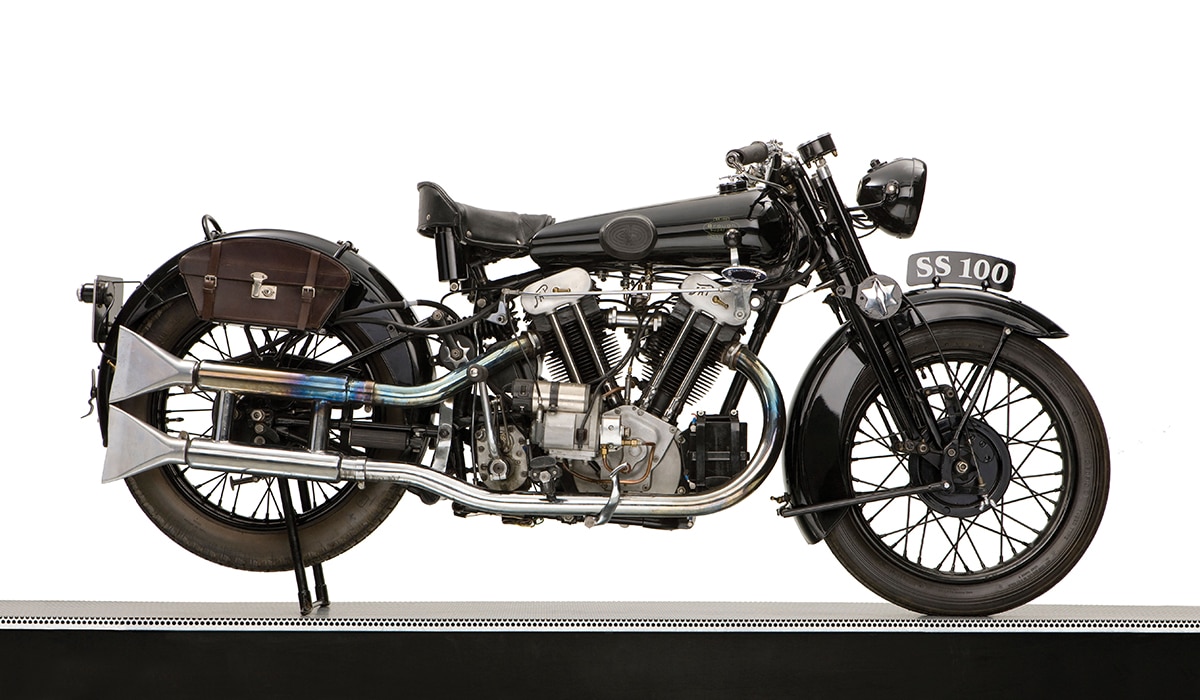
2. First Superbike
The Brough Superior SS100 was the world’s first superbike, or high-performance motorbike. It was built with a guarantee to drive faster than 160 kilometres per hour, extremely rare for any motor vehicle at the time.
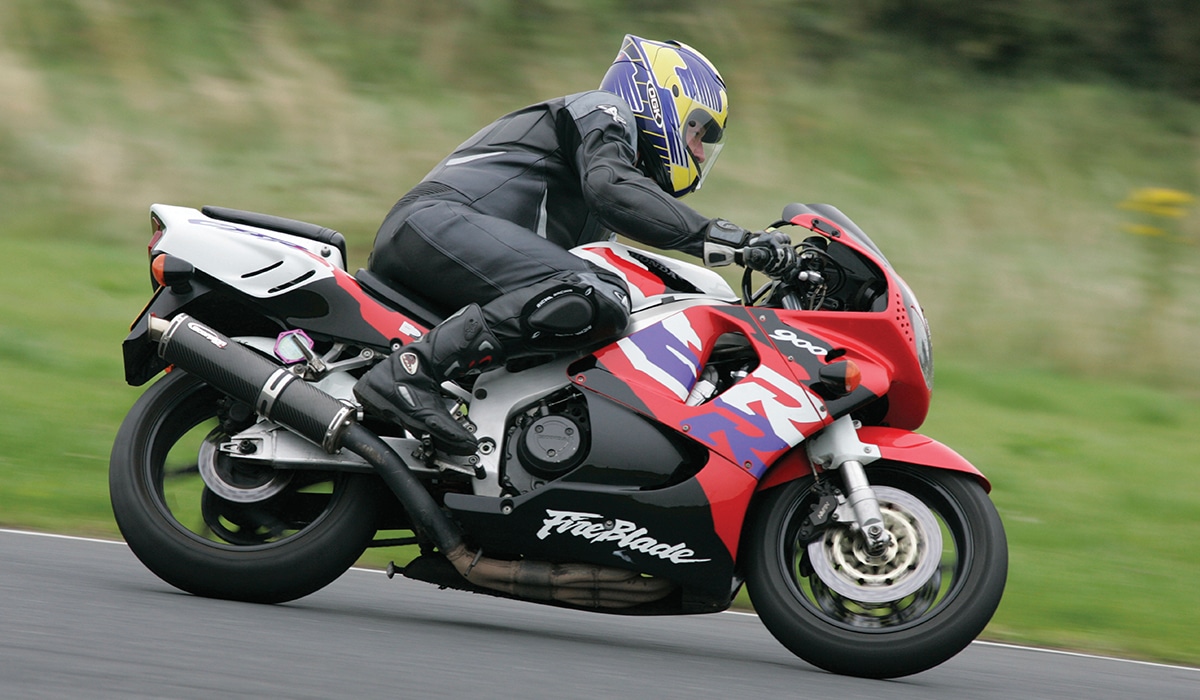
3. Sport Bike
Honda’s FireBlade CBR900RR sport bike was built with weight saving as the priority. Revealed in 1992, the bike was powered by a 900 cc engine and was the lightest and most compact in its class.
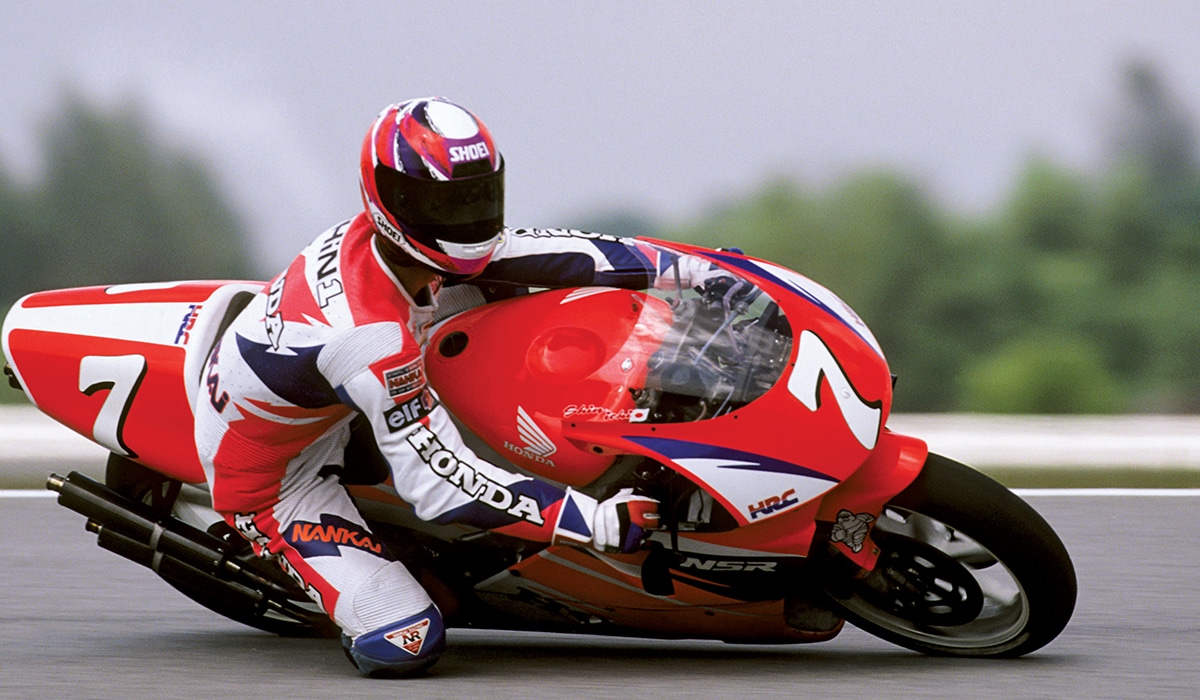
4. Grand Prix
The Honda NSR500 is the most dominant Grand Prix motorbike in modern racing. Between 1984 and 2002 ten 500 cc World Championships were won by this model, with over 100 wins in total.
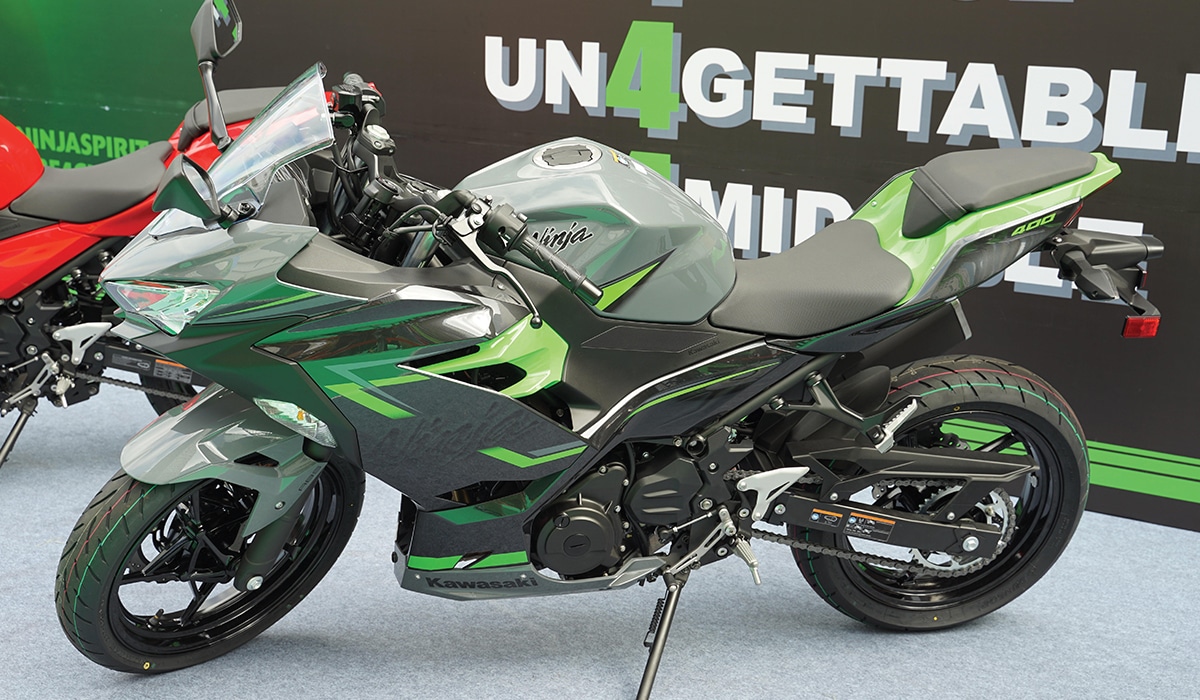
5. Lightweight
This futuristic-looking lightweight motorbike is the Kawasaki Ninja 400. The sport bike is the largest in the 399 cc category but is also one of the lightest motorcycles on the market at just 168 kg.
Words by: Ailsa Harvey
Imagery: Alamy, Getty, Honda, Serge Piotin/Wikimedia Commons






